This article is largely reprinted from the “Entitlement” article in my Whoa!Canada Proportional Representation series.
The electoral reform process in Canada has begun.
The Green Party has long supported meaningful electoral reform to Proportional Representation, and I’ll do my best to explain why here.
Any Proportional system Canada might adopt will be a huge improvement to our democratic process. This is because it will produce a Parliament that truly represents Canadians. As our Fair Vote friends are fond of saying, 39% of the votes will achieve 39% of the power.
Around the world, nobody switches to a First Past The Post system because it is not only antiquated, it doesn’t work very well. In fact, more than 85% of OECD countries use Proportional Representation, and some progressive countries have been using PR for well over a century.
But it is really hard to replace a First Past The Post electoral system, because the politicians who benefit disproportionately are generally not inclined to adopt a fairer system, because it will limit their own power to what they earn in votes. It is a credit to Mr. Trudeau’s government that they are going through the promised reform even after winning a majority government.
disproportional representation
Canada’s current electoral system results in disproportional representation. This is breathtakingly apparent when you look at the back to back “majority” governments we’ve had. The thing that hits the eye with these two election result graphs is the almost identical consecutive wins achieved by different parties. The 2011 Conservatives won a phony majority with 39% of the vote, just as the 2015 Liberals won a phony majority with 39% of the vote. This is a winner take all system, so that’s the only part of the graph that matters.
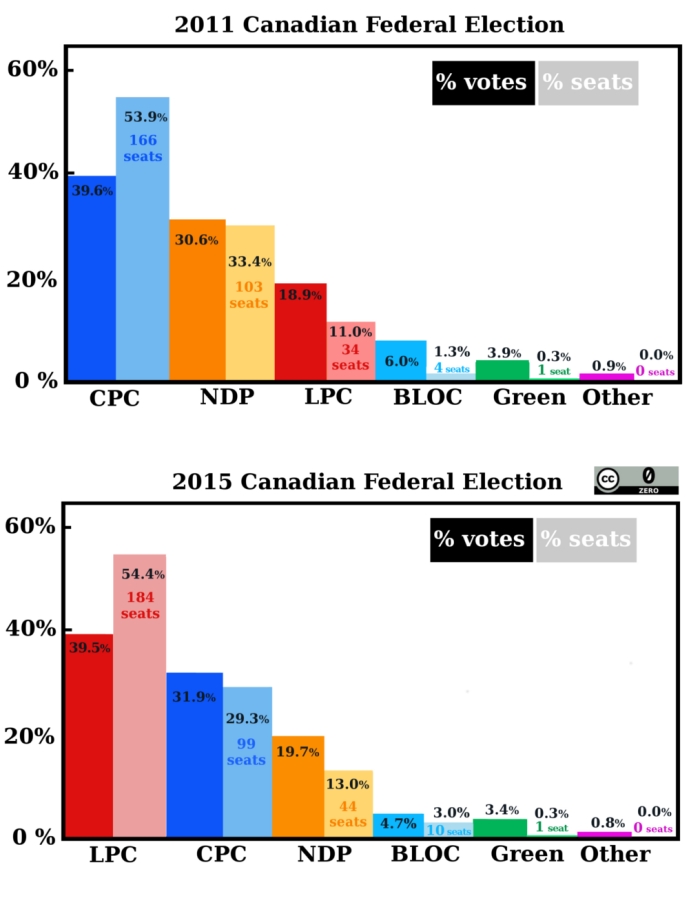 But looking at the details, you can see a clear picture of the unfairness in the system.
But looking at the details, you can see a clear picture of the unfairness in the system.
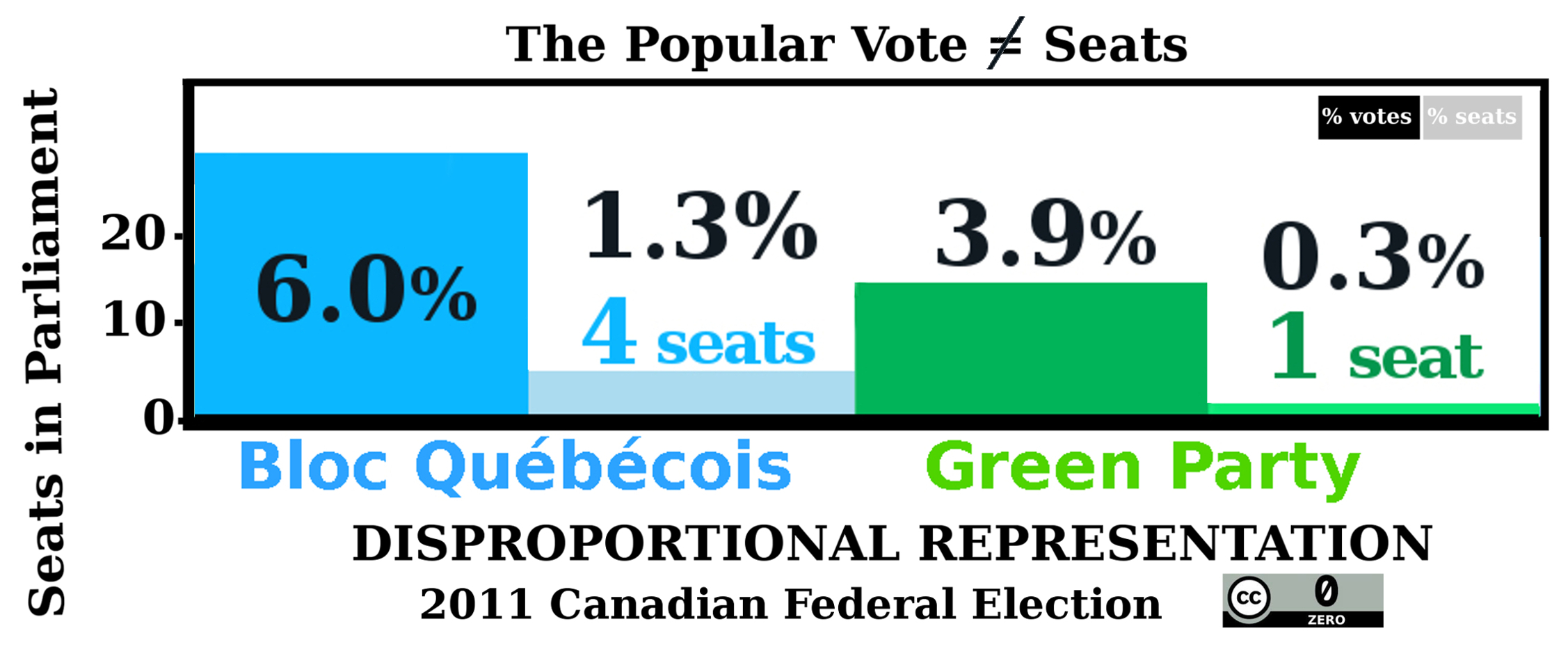
In 2011 the Bloc Québécois won 4 seats with 6% of the vote. In 2015 the Bloc Québécois won 10 seats with only 4.7% of the vote.
I don’t know about you, but I just can’t get my mind around the idea that fewer votes can more than double a party’s seats in Parliament.
In these two elections, the Green Party outcome was consistent, winning 1 seat with approximately 3 percent of the vote.
While the Green Party’s 3-4% of the vote only won a single seat in Parliament, the Bloc’s 6% and 4.76% won four and ten seats respectively. Such crazy math in the “easy to understand” First Past The Post is one of the reasons Canadians are likely to say “I don’t understand politics.”
There is a reason for the disparity between the two small parties. While both parties suffer from the inequity in our Winner-Take-All system, the Green Party’s support is spread out across Canada but Bloc voters are concentrated in the same geographic region. With more Bloc voters in a riding, the party has a much better chance to win seats. Even so, the Bloc still gets less than half as many seats as their votes warrant.
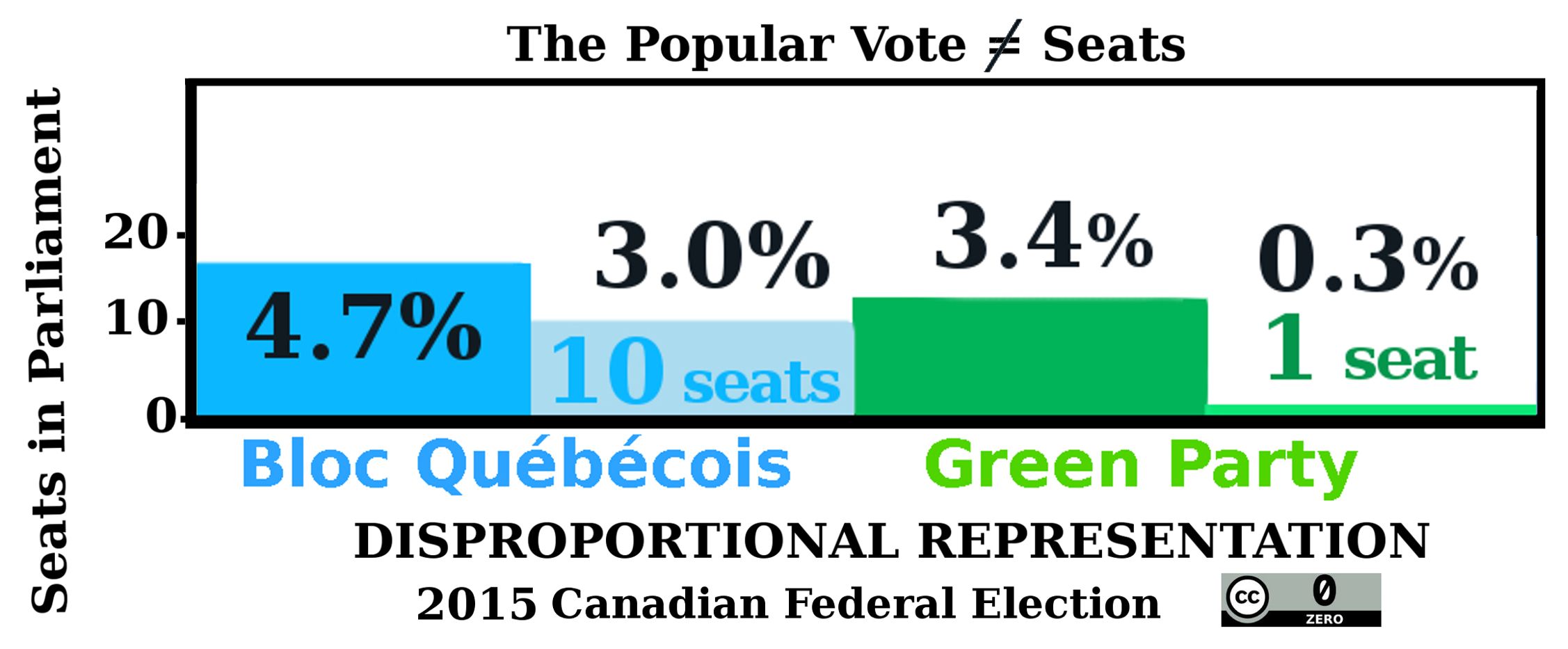
With our single member plurality electoral system, the party that wins a majority of seats wins a disproportional amount of power. This gives the candidate (and party) with the most votes the win.
Not just any win, THE win.
For a candidate, that means s/he is the only representative — and the only voice — for the electoral district where s/he was elected. For a political party, that means a majority of seats, even though that party failed to win a majority of the votes cast. And whenever anyone talks about electoral reform, that’s pretty much what everyone looks at: how our system works for political parties.
Too often forgotten in discussions of electoral reform is how our system works — or doesn’t — for the Canadian people.
Politics isn’t a job creation program for politicians, it is supposed to provide citizens with representation in Parliament so our laws and policy reflects what citizens want and need.
Our representatives are elected in single member electoral districts: that means each district elects only a single Member of Parliament who is expected to represent everyone in the electoral district. That’s what Canadians are used to, and I (like most of us, I suspect) have long thought this is how it has to be because this is how it’s always been. And yet lately I’ve been learning Canada has used a variety of different voting methods in different parts of Canada over the years.
Although our MP can help us all equally if we bring them an administrative problem that requires cutting through bureaucratic red tape, or sometimes find a compromise on a contentious issue that will satisfy most citizens, when it comes to policy, none of us can realistically expect an MP who campaigns in favour of one issue to fight against it after they have been elected.
As you can imagine, it isn’t often we’ll hear any sitting MP talking about this problem in public; so it was pretty impressive to hear former Guelph MP, Frank Valeriote admit this publicly during his last term of office.
[youtube https://www.youtube.com/watch?v=lpTSBw0V9Zk&w=480&h=360]
What ordinary people expect from democracy — what we are told to expect — is that our MP will represent us. But the reality is that one person can’t possibly represent the opposing views of a hundred thousand constituents.
This is why multi-member districts — larger electoral districts which elect multiple MPs — are a great idea. When more than one MP is elected in a district, more than one view from the district can be represented in Parliament. And after all, isn’t that the point of democracy?
Electoral Reform for Greens
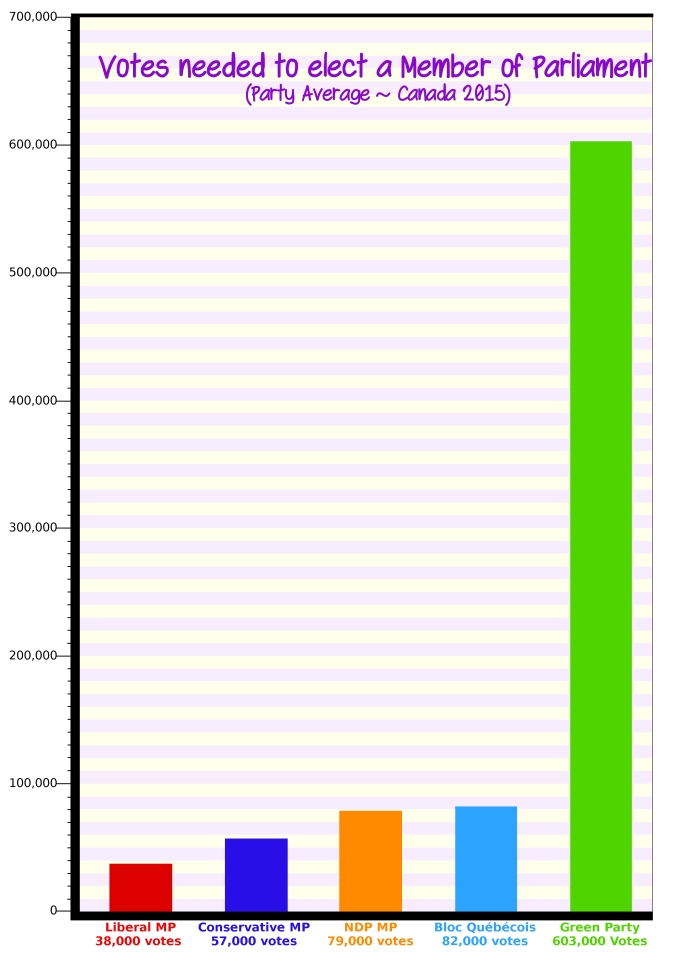
Small parties almost always favour Proportional Representation because small parties and independent candidates are the most disadvantaged by winner-take-all systems. The graph shows us just how badly the Green Party of Canada fared in 2015. We all know that it was even worse in 2008 when almost a million votes failed to elect any Green candidates at all. From the outside it looks as though the Green Party is doing badly… worse, in fact, than 2008. Although I haven’t done a scientific study, or even conducted a public opinion poll, I don’t believe that for a minute.
Green supporters don’t often stop thinking green thoughts or wanting a sustainable future or believing green policy. But in the face of an electoral system that makes it nearly impossible to get candidates elected, intelligent people very often switch to other parties in desperation. Although we are all very much aware of the bigger parties appropriating Green policies, we don’t often realize this is often because Green supporters bring them along.
This is not just a Canadian problem; this is a feature of the First Past the Post electoral system. If we look across the pond we can see the UK has the same problems with FPTP as we do. In some ways even worse, as it took four million votes to elect a single UKIP MP in their most recent election.
Politics is not simply a numbers game. Even though most Canadians haven’t really understood why our political system fails to work the way we think it should (by providing us with representation), most of us have known the system is badly broken for a very long time. And since the system has not been working for us, so many Canadians have fallen under the spell of strategic voting in vain hopes of gaming the system to make it work for us.
I can’t tell you how many times during the campaign that people told Bob how much they wanted to vote for him but felt they couldn’t. One of the very worst things about all this strategic voting is that because so many Canadians are not voting for who/what they want, the reality is there is no way to tell what most Canadians actually do want. It’s kind of like not having accurate census data: in the absence of fact, the government is free to do whatever it likes. Especially when a single party holds a majority. It is worse still when it’s a phony majority, as most of ours are. Since 1945 there have only been 2 majority governments a majority of Canadians voted for, and before that, only 4 Canadian “majority” governments in Canada were actually elected by more than 50% of the vote. And defenders of the status quo try to paint coalition government as undemocratic!
Proportional Representation for Canada will mean larger electoral districts which have more than a single MP, and they will almost always result in coalition governments. Far from being undemocratic, majority coalition governments are elected by an actual majority of voters!
Some people think the political parties advocating for electoral reform to Proportional Representation are doing it because it will give them an advantage. This is simply not true. Proportional Representation would most certainly improve the lot of the smaller parties, but not by giving them an unfair advantage, but by removing the unfair advantage the winning party gets under our winner-take-all system. Proportional Representation is intended to ensure the votes each candidate and/or party earns is reflected in the power they get in Parliament.
Institutional Discrimination
Small parties suffer systemic discrimination in the Canadian system. Even with sitting MPs, the Green Party of Canada and the Bloc Québécois parties are not treated equally. The argument in support of this discrimination is that neither party has enough seats in the House of Commons to be counted as an official party.
But political parties are required to jump through bureaucratic government hoops to get registered by the government before any candidate is allowed to compete in an election under the party banner. Federal Registration is how a political party gets on the ballot and becomes a real party. Why isn’t a “Registered Party” an “Official Party”?
Where did this crazy idea that a party with a sitting MP is not a real party until X number of candidates have been elected come from? If there was ever any doubt about the fact “X” is a purely arbitrary construct designed to privilege the two largest parties, it was dispelled in the aftermath of the 1993 Canadian election when the Progressive Conservative Party was reduced to two seats. At that point an exception was made to allow the Progressive Conservative Party to retain the special perks of “official party” status even though it had only 2 seats. In spite of the fact the Canadian electorate had unambiguously indicated that party should no longer be so entitled.
So while the Progressive Conservative Party whose governance angered an overwhelming number of Canadians was allowed to retain its privilege, a Green Party with 2 sitting MPs was not an “Official Party,” any more than the Bloc Québécois is today with 10 sitting MPs.
But Official Party status delivers financial perks. It isn’t enough that our Winner-Take-All system gives the winning party an unfair advantage in seats, the “official parties” get extra funding for party leaders, party whips, cabinet positions, parliamentary secretaries etc. All paid for by taxpayers, including Green taxpayers — while our party is denied the funds intended to aid a party in representing its constituents. Elizabeth May is not only an Independent candidate doing a phenomenal job for her constituents in , she represents the interests of more than 600,000 voters — including those of us waaaaaay over here in Waterloo Region.
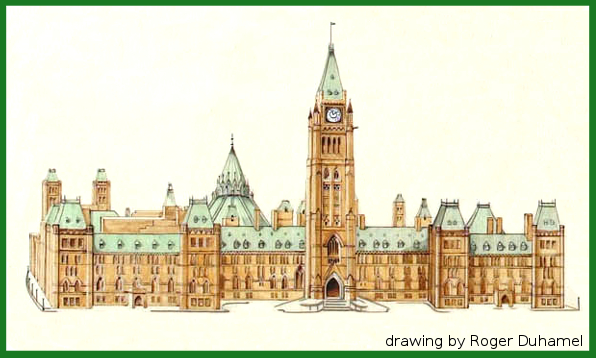
If the number of votes needed to elect a Member of Parliament was consistent, if 38,000 votes translated into one MP, as it did on average for the Liberals, the Green Party would have earned enough votes to elect 16 MPs in 2015. Which ought to be more than enough to achieve official party status even in our Winner-Take-All world. But the system we have in place is not about fairness for Canadians, it’s about keeping the real power in the hands of the two most powerful parties.
The idea that any candidate who wins an election and goes to Ottawa to sit as a Member of Parliament should be denied the same rights and respect as any other MP is not only ludicrous, it is undemocratic.
The problem is not so much that the candidate or the party is discriminated against, although that certainly isn’t fair. The real trouble is that the citizens who elected these MPs are discriminated against. Our winner-take-all system has allowed the deck to be stacked against small parties and independent candidates, but worst of all, against citizens. Seems to me all Canadian voters ought to be entitled to representation. Even in our terribly unrepresentative representative democracy, all votes should be effective because all voters should be equal.
Proportional Representation will benefit the Green Party
If the votes cast in past elections are anything to go by, Green voters are likely to benefit most from Proportional Representation. Some might suggest this is unfair, but the opposite is true. The disproportional election results we get now give the winning party an advantage it hasn’t earned at the expense of the other parties. As the Green Party is the most disadvantaged by our disproportional Winner-Take-All system, getting the seats in Parliament it deserves might look like a windfall, but the truth is the Green Party will only get the seats it has earned in votes, making it better able to represent its constituents in Parliament..
The way Green voters benefit is by actually getting the representation in Parliament we voted for.
![]()
![]()
![]()
![]()
![]()
![]()
For more information, my Whoa!Canada series is intended to demystify Proportional Representation. This is the series so far:
• Proportional Representation for Canada
• What’s so bad about First Past The Post
• Democracy Primer
• Working for Democracy
• The Popular Vote
• Why Don’t We Have PR Already?
• Stability
• Why No Referendum?
• Electoral System Roundup
• When Canadians Learn about PR with CGP Grey
• Entitlement
There are also a PR4Canada Resources
which includes links to Proportional Representation source material and articles, as well as helpful videos.
[Truth be told it was John Cleese who convinced me.]